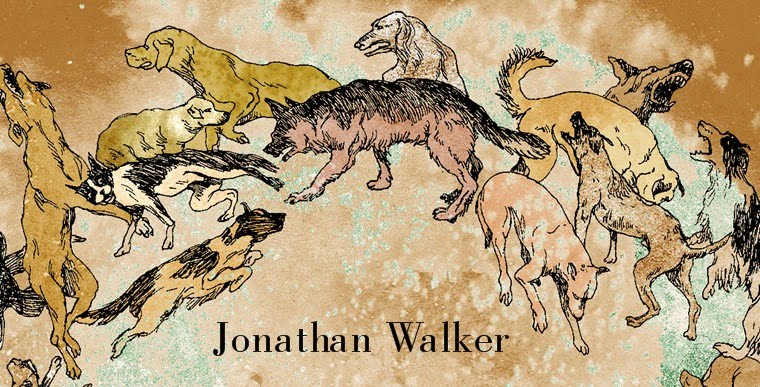Above: The Wounds of Giulio Cazzari, created by Dan Hallett.
This illustration accompanies the title chapter of Pistols! Treason! Murder! It depicts in allegorical form the assassination of Giulio Cazzari, one of Vano’s numerous victims.Vano’s costume here is taken in part from that of the figure of “The Spy” in Cesare Ripa’s Iconologia, a ubiquitous visual source book of the period. Note the cloak of eyes and ears, and the winged boots of Hermes, messenger of the gods, who was also patron of “revelation, commerce, communication and thieving” (Vano’s activities fell under all four categories).
The cup is filled with ink, but obviously alludes to the Holy Grail, while the imagery as a whole also suggests the iconography of the wounds and sacred heart of Christ. However, in the context of the book, there is a more explicit reference to a passage from an earlier chapter, “Idiolect,” in which Vano’s words, read aloud, “taste like red wine—or, to be more precise, bad red wine: acidic, furring the tongue, lips and teeth; intoxicating, yet also prone to induce sore eyes and jabbing headaches. The more of them you speak, the more they numb the mouth and brain, and induce slurring.”
Intoxication as a response to Vano’s words is a recurrent theme in the book, underlined elsewhere by another image in which I am shown drinking from the same cup into which Vano dips his pen here.
In the image above, intoxication is further associated with a kind of knowledge based on vicarious participation in historical events through exemplary re-enactment, that is with the stigmata, and with holy communion, in which a Christian devotee respectively receives the wounds of Christ, or ingests the blood of Christ. But here the sacred meaning is violently profaned. The secular grail that Vano holds aloft is therefore the elusive, unattainable goal of every historian’s quest: direct, unmediated access to the past.
Finally, the disassembled corpse of Giulio Cazzari, the victim whose remains lie within the heart at the image’s apex, also alludes to the fragmentary nature of the sources recounting his death, which cannot be stitched together into a single, coherent narrative.
To be absolutely clear, this image makes no claim to be a literal depiction of anything. Although it is composed of elements adapted from early modern sources, I have no idea what Vano or Cazzari looked like or wore. And while Cazzari certainly was assassinated as a result of Vano’s reports on his activities, his dead body was not in fact dismembered. This image is therefore a kind of diagram, one mapping arguments and elaborating subtexts rather than describing events.
None of the ideas outlined in the discussion above are expressed directly in the text of the book. Such explanation would be redundant: the argument is all there in the illustration itself, and in its implied relation to other elements of the presentation, both visual and linguistic. So another of my arguments is, in effect, that we should take images seriously as independent vehicles for complex and abstract ideas.
[There will be more on the illustrations for Pistols! Treason! Murder! in future posts ...]

No comments:
Post a Comment